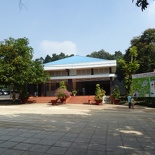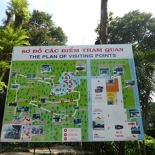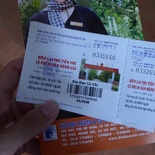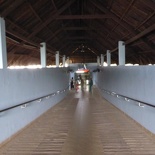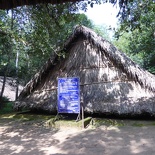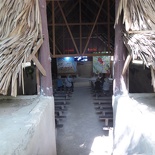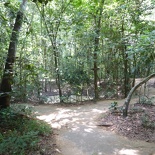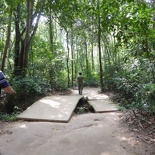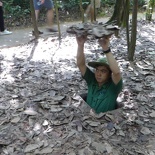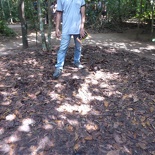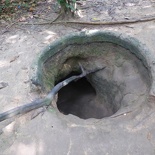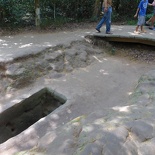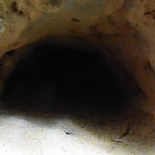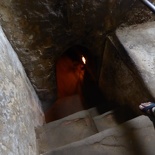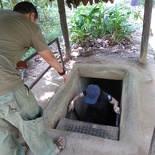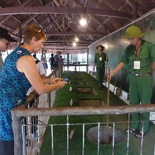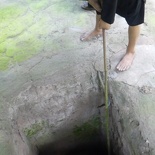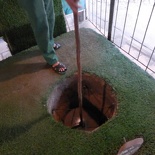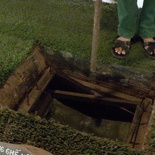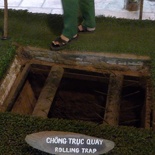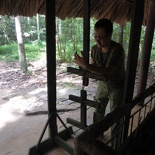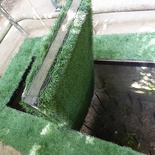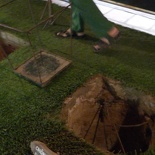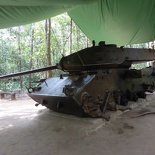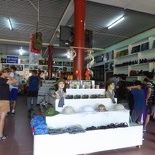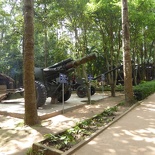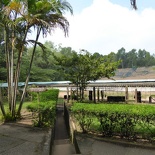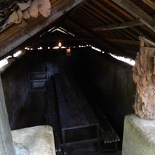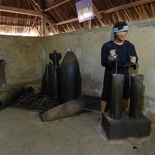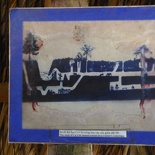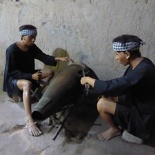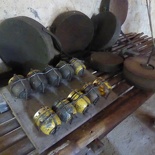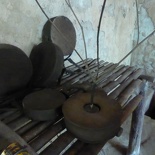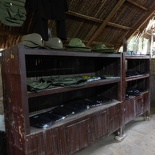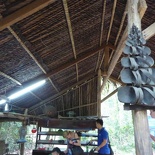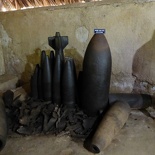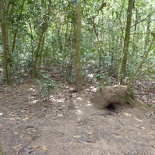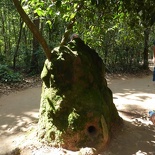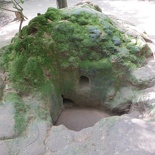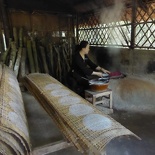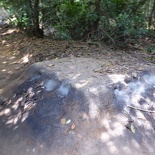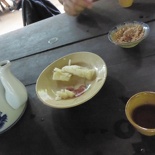The Vietnam war was one of the less glamorous part of Vietnamese history. The Vietnamese communist forces in the late 1940s began digging a network of tunnels under the jungle terrain of South Vietnam near Ho Chi Minh (Saigon), during their war of independence from French colonial authority in the 1946.
After the end of the war against French invaders, the increasing United States military presence in Vietnam in the early 1960s in support of a non-Communist regime in South Vietnam saw the Chu Chi Tunnels begin re-utilised and gradually expanded by the North Vietnamese and Viet Cong troops (as Communist supporters in South Vietnam were known) during the American Vietnam War.
Accessing the Cu chi tunnel
Today, Chu Chi Tunnels are part of a massive war museum that offers a grim peek into the underground life of Vietnamese soldiers back in 1948. The attraction is located 70 km northwest of Ho Chi Minh City, about a 2 hour drive away through country-side roads and farmlands.
The historical site comprises more than 120km of underground tunnels still located underneath the museum grounds. At least 45,000 Vietnamese men and women are said to have died defending the Cu Chi tunnels over the course of the Vietnam War.
In the years following the fall of Saigon in 1975, the Vietnamese government preserved some salvageable parts of the Cu Chi tunnels and included them in a network of war memorial parks around the country.
The visitor center of the attraction houses a gift shop, toilets as well as parking and ticketing counters. A short walk through an underground entrance under a main road brings you into an adjacent forested encampment.
This area lined with several huts housing permanent exhibits such as posters and videos. These showcases the escalations which led to the Vietnam war, as well as the creation and use of the Cu chi tunnel network. Prior to entering the underground tunnels, visitors are presented with a short film of how the tunnel system works. Many of these videos however, are pretty one sided as told from the Vietcong perspective.
Working the tunnels
Moving from the huts will bring you on clearly labeled sand and gravel paths. These brings you along various points of interest around the encampment. The entire facility lives underground conspicuously as you walk through a rather typical and ordinary Vietnamese secondary forest.
These tunnels are often dug by hand but only a short distance at a time. They were however particularly useful during the US-Vietnam war as it protected the Vietcong well from the United States heavily reliance on aerial bombing, particularly carpet-bombing areas by B-52 bombers by the hundreds. Going underground means the North Vietnamese and VC troops can still survive and continue their guerrilla tactics against their much better-supplied US enemy.
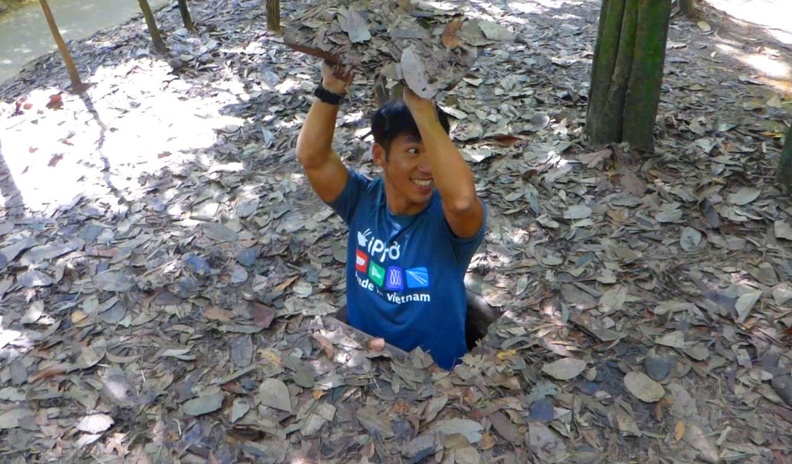
I got to try entering one of the several very well disguised trapdoors which served as entry points to the tunnel network. When closed and camouflaged, it is almost undetectable. You got to be a really small person to fit into these tunnels, often having the need to crawl on all fours. A typical US larger US soldier may have issues fitting into their tunnels.
A vast extensive tunnel network
At its peak during the Vietnam War, the network of tunnels in the Cu Chi district linked Vietcong support bases over a distance of some 250 kilometers. This formed an immense network of connecting underground tunnels located in the Củ Chi District of Ho Chi Minh City (Saigon) from the outskirts of Saigon all the way to the Cambodian border.
Going underground means the North Vietnamese and VC troops can still survive and continue their guerrilla tactics against their much better-supplied US enemy.
The tunnels are part of a much larger network of tunnels that underlie much of the country. About 120km of this tunnel network resides right under your feet in these forests.
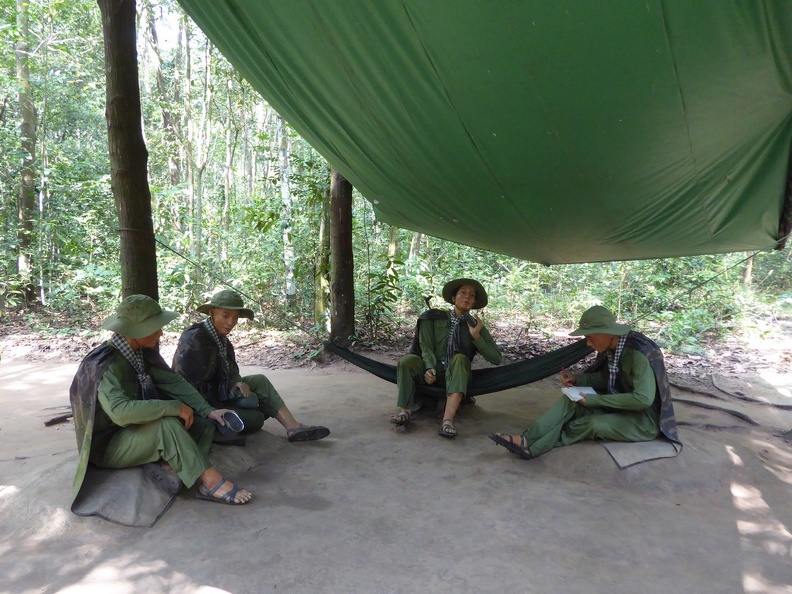
Crawling the Tunnels
Here, you can have a go at crawling through one of the several tunnels still preserved today. In pitch darkness, you can crawl through most of the tunnel in a half crouch position through varying distances from 20 meters all to 100 meters. At times, you encounter small tight areas where you need to duck. This is navigated often in pitch black darkness with only the cold walls by the side to guide you through. Not for the claustrophobic!
Today, many of these tunnels have been upgraded with cement walls and widened to withstand repeated abuse from tourists. The 100 meter tunnel experience is close to what it would have been like during the war.
Furthermore, many soldiers used these underground routes to house troops, transport communications and supplies. Booby traps were also laid and used to mount surprise attacks, after which the Vietcong would disappear underground to safety. It is not uncommon for these trapdoors are used as quick escape points for Vietcong scouts, often leading to a chase into a booby-trapped trapdoor entrance with a life grenade waiting for the first US solder to enter.
War and booby traps in the Tunnels
Vietcong soldiers are masters of deception and their hit and run techniques using the tunnel served invaluable in their resistance to the US forces. Lurking in the tunnels set numerous booby traps for US and South Vietnamese soldiers. The Vietcong will plant trip wires that would set off grenades or shower boxes of poisonous snakes or scorpions on the heads of unsuspecting enemy troops.
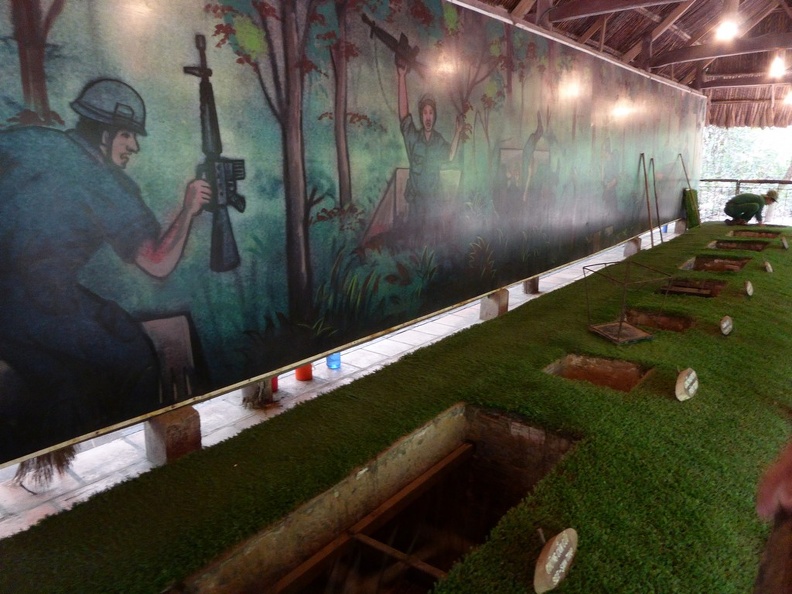
There, I was introduced to a variety of booby traps created by the Vietcong. Moreover, the traps are very innovative in design, these simple working mechanism are designed to do one thing very well- to kill. Ensnaring, immobilizing and spearing unsuspecting soldiers who thread into their entrances. All the traps do not require power and uses gravity to drive and activate them.
Some will actuate a platform which sends 4 spikes through your leg, some into your head. While some don’t kill but are just pain torture. There are even urban warfare traps, such as swinging spike plates made to booby trap when opening doors.
Therefore, knowing the importance of countering the tunnel threats and growing guerrilla tactics, this prompted US forces to train some small stature soldiers as “tunnel rats”. These soldiers would spend hours navigating the cramped, dark tunnels to detect booby traps and scout for enemy troops.
There are a couple of war equipment on display, such as a US M41 tank destroyed by a mine during the war, as well as a number of artillery guns. There is a mid-point gift shop in the attraction, with a small café selling drinks as well as a firing range.
Check out the traps of the Cu Chi tunnel grounds in the video:
Cu chi Tunnels War And Booby Traps
Fire a live rifle
Incidentally, if you hear distant gunshots in while the jungle, you are not wrong. You can choose to fire a variety of Vietnam War era weapons at a shooting range located right in the attraction, such as the American M16, or the soviet AK-47, subjected to availability. It costs VND 50,000 per bullet with a minimum of 10 bullets.
Subterranean lifestyle
Besides serving as communication and supply routes for Vietcong solders, the Cu Chi tunnels served a key supporting roles during combat operations, including acting as an underground base for communist attacks against nearby Saigon.
In areas experiencing heavy US-bombing, people spent much of their life underground. Consequently, the Cu Chi tunnels grew to support self-sufficient ecosystems, housing entire underground villages, living areas, kitchens armory, hospitals, command centers and storage facilities.
These subterranean mini-cities were also of great importance to the Viet Cong during the American war, which protected them from the growing American military effort. These tunnels were built so deep underground; they were immune to aircraft bombing, artillery, as well as military tanks passing overhead without causing any damage to the tunnels.
These underground command centers are large, serving as the Viet Cong’s base of operations. This comprises of large meeting rooms where several military campaigns during the Vietnam War were planned, particularly the Tết Offensive in 1968.
In addition to providing underground shelter for tactical planning, the shelters allowed the war effort to continue under the surface. Women supporting the war effort mainly stay in these underground huts to support for food and manufacturing operations. This includes working in Armories where bombs, mines and traps are fabricated, as well as making rubber slippers from tires, with interesting contraptions such as the “reverse” slipper to deceived enemy troops.
Simple but effective tunnel engineering
The existence of an extensive underground city calls for a need of an innovative ventilation and air filtration systems. My guide taught us how to spot the “air-breather” ventilation holes on the ground surface which feeds fresh air underground.
These holes often disguised and passed-off as large termite molds with inconspicuous-looking vent holes at the bottom. They are also laced with annoying scents and that of American soldiers to throw off American sniffer dogs.
Cooking Underground
Even the smoking exhaust of the underground kitchens are carefully channeled away from the actual site itself. Also, smoke vents out a considerable distance away which is both invisible from the air and far enough to fool US soldiers on its actual location.
You can end your visit at the Củ Chi tunnels with a tea break of tapioca and lotus tea, eating the very same food the underground soldiers had to live with in the very heart of the tunnel network.
There, I was introduced on how tapioca was the preferred food of choice by the Vietcong during the war. It was chosen not only for its good nutritional content, as well as the survivability of the plant to withstand aircraft bombings. The surviving buried roots, even after the plant had been flattend can still be harvested for food.
In all, the tunnels was definitely an eye opener for me. Also, I always read about war stories and the turmoil experienced by both sides of the Vietnam war. Only when you are here in person where you can appreciate the marvel human ingenuity in times of conflict. You will be good at the Củ Chi tunnels for about 2-3 hours, which is a half day commitment including traveling time from Ho Chi Minh city, definitely an item on your list when you are in the area.
View more gallery photos of the Cu Chi tunnels here.

